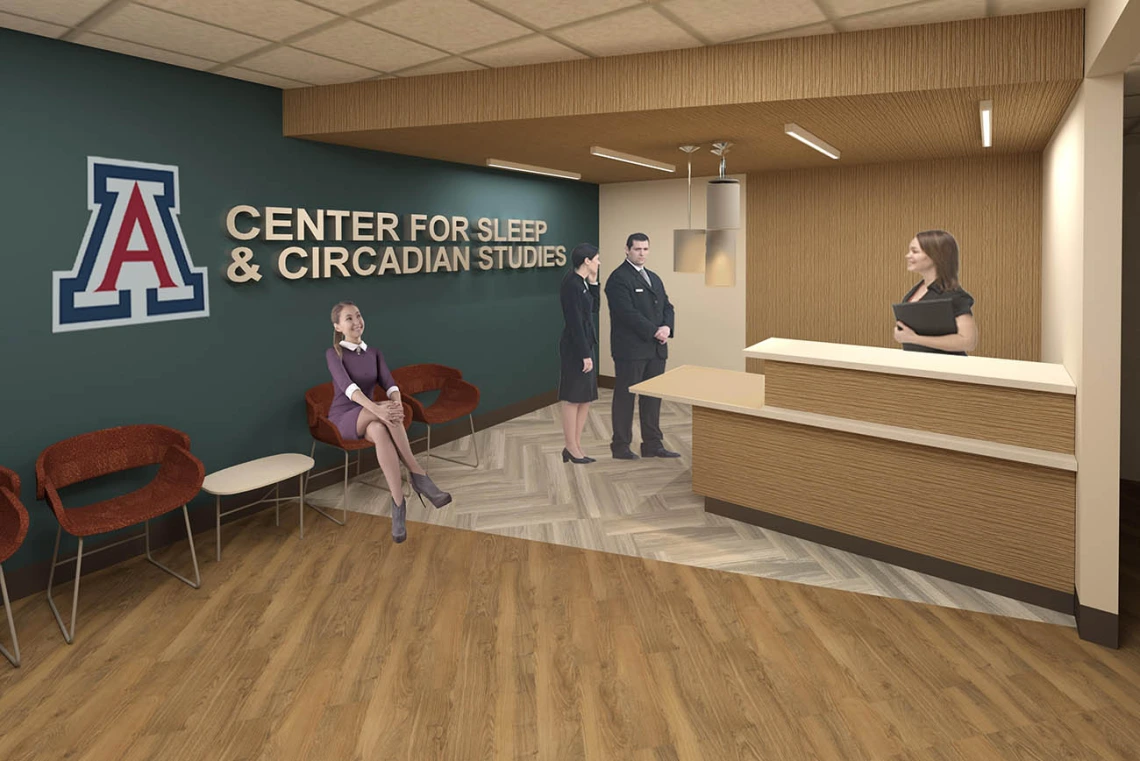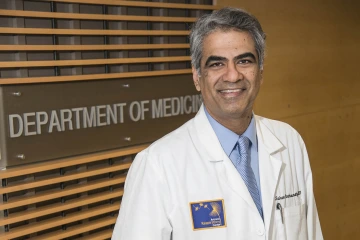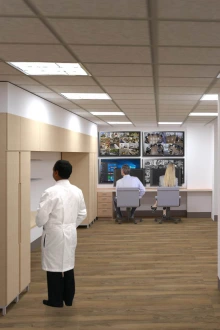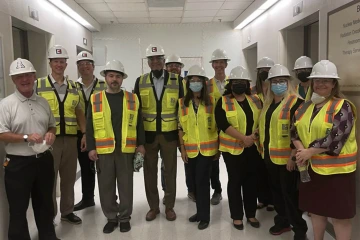Center for Sleep and Circadian Sciences Construction Underway
A new location will give investigators access to state-of-the-art technology to conduct sleep and circadian rhythm research.

An architectural rendering shows the lobby of the new Center for Sleep and Circadian Sciences, where researchers will study sleep and circadian rhythms while controlling a multitude of factors including temperature, noise levels, and the intensity, duration and color of light.
For years, University of Arizona researchers have conducted sleep studies in a leased facility located above a Tucson bar and grill. Now, thanks to a $5 million construction grant from the National Institutes of Health Office of the Director, the University of Arizona Health Sciences Center for Sleep and Circadian Sciences is getting a new home.

Sairam Parthasarathy, MD, is director of the UArizona Health Sciences Center for Sleep and Circadian Sciences and a professor of medicine in the College of Medicine – Tucson.
“The University of Arizona Health Sciences has studied sleep for more than four decades, during which time our researchers have made pioneering advances in understanding the connections between sleep and cardiovascular disease, neurocognition and behavioral interventions,” said Michael D. Dake, MD, senior vice president for UArizona Health Sciences and principal investigator on the grant. “The Center for Sleep and Circadian Sciences’ new location and facilities will allow us to find new solutions to critical sleep issues, improving health and human potential for all.”

An architectural rendering shows the Center for Sleep and Circadian Sciences’ control room, where researchers will be able to monitor sleep suites without disturbing study participants.
“We spend a third of our lifetimes sleeping,” said Sairam Parthasarathy, MD, director of the UArizona Health Sciences Center for Sleep and Circadian Sciences. “Sleep is important not only for the brain and mental health, but also for the body and every organ system.”
Researchers will be able to study sleep and circadian rhythms while meticulously controlling a multitude of factors including temperature, noise levels, and the intensity, duration and color of light. The new facility will be in close proximity to imaging facilities, clinical research areas and other research laboratories.

Researchers took a hard hat tour at the new location of the University of Arizona Health Sciences Center for Sleep and Circadian Sciences. (From left) Daniel Taylor, PhD, Michael Grandner, PhD, Fabian Fernandez, PhD, Sairam Parthasarathy, MD, Christopher Morton, Salma Patel, MD, Scott Killgore, PhD, Natalie Provencio, MS, Patricia Haynes, PhD, Sicily LaRue, RPSGT, Fiona Bailey, PhD, and Michelle Perfect, PhD.
Research at the new facility could include identifying genetic biomarkers associated with sleep behavior and disorders, examining school and community factors affecting sleep health, studying the impact of global warming and increases in carbon dioxide on sleep, and the effects of breathing stale, recirculated air.
Sleep investigations are vital to sleep-related conditions such as sleep apnea, heart disease and stroke, as well as long-term air flying and future space exploration.
Dr. Parthasarathy is director and member of the center’s executive committee, which also includes sleep experts Michael Grandner, PhD, associate professor of psychiatry in the College of Medicine – Tucson, Patricia Haynes, PhD, associate professor of Health Promotion Sciences in the Mel and Enid Zuckerman College of Public Health, William D. “Scott” Killgore, PhD, professor of psychiatry in the College of Medicine – Tucson, and Daniel Taylor, PhD, professor of psychology in the College of Science.
Construction was supported by the Office of the Director of the National Institutes of Health under the award number C06OD028307. This content is solely the responsibility of the author and does not necessarily represent the official views of the NIH.
Contact
Margarita Bauzá
313-520-2109
mbauza@arizona.edu

